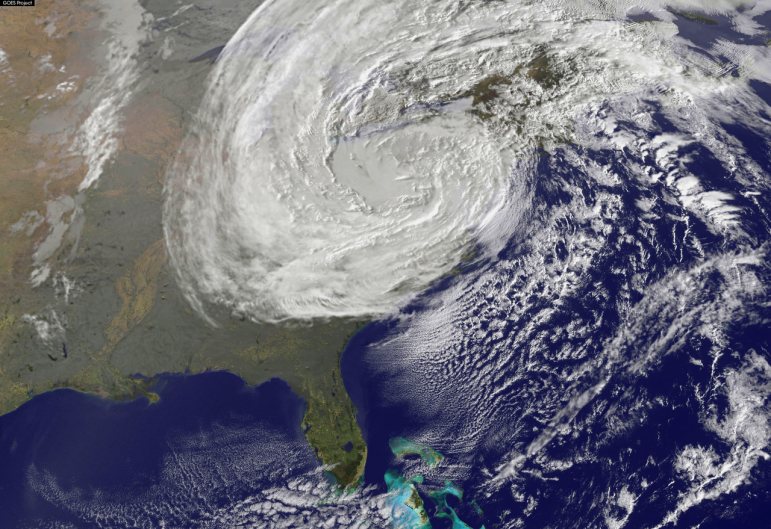
NASA
Superstorm Sandy seen from space, October 30, 2012.
Hurricane Sandy devastated many neighborhoods throughout New York City when it hit on October 29th, 2012. The Lower East Side, which was located in New York City’s Emergency Evacuation Zone A when Sandy hit, now referred to as Zone 1, endured some of the storm’s worst damage. Tunnels, train stations and homes were completely inaccessible and most grocery stores, pharmacies and other businesses were damaged by floodwater and closed for several days.
A culmination of surveys collected from LES residents and local organizations informed a new report developed by the Community Development Project at the Urban Justice Center and Good Old Lower East Side (GOLES) that explores the community’s experiences during and after Hurricane Sandy and creates a plan for how the community and government can work together to plan for future disasters.
Data from Getting LES Ready: Learning from Hurricane Sandy to Create a Community-Based Disaster Plan for the Future indicates that 94 percent of LES residents lost power; 85 percent did not have hot water and 81 percent did not have heat following the storm. The majority of LES residents said they did not evacuate before Hurricane Sandy because of a false sense of security and poor communication from the city. Residents in public housing and with limited English proficiency had a particularly hard time getting information and help during the recovery efforts.
With a well thought-out, community-based disaster relief plan that uses the area’s existing resources, institutions and networks, these problems could have been mitigated or prevented altogether.
The Lower East Side has a long history of coming together as a community and building social bonds and networks that aid residents in times of need. Today the area has numerous community-based organizations (CBOs) that serve the needs of residents—57 percent of the survey respondents reported active involvement in their community. This robust community infrastructure played a critical role in the aftermath of Hurricane Sandy.
Hours after the storm ended, and well before government agencies or large non-profits arrived, LES-based community groups had already started assessing the needs of residents and distributing lifesaving supplies. In fact, almost two-thirds of our survey respondents reported getting assistance from a community-based organization, a tenant association or a religious organization in the days and weeks following Sandy. These organizations should be consulted by the city and included in future disaster relief plans.
In contrast, the report found that government response in the immediate aftermath of the storm was slow and inadequate given the immense needs of the Lower East Side: 64 percent of survey respondents said they did not receive any relief from the government or other “official” sources.
Residents with limited English proficiency could not get the resources they needed; 35 percent did not have access to information during the storm and 45 percent of people with limited English proficiency reported that they did not have their needs met during the storm. To fill the gap where the government fell short, community-based organizations had to take matters into their own hands.
Learning from these experiences, community organizations in the Lower East Side formed a Long Term Recovery Group (LTRG), now called “LES Ready,” a coalition of 32 community groups and institutions that will coordinate resources, preparedness planning and training in the event of future disasters. This is one group the city can turn to begin developing a disaster plan that will cater to the unique needs of the Lower East Side.
The group is developing a community-based disaster response plan which will include, among other recommendations, education and awareness trainings for residents in various languages and online maps to show residents where to go for various types of services and supports in the event of another disaster.
LES Ready and this report exemplifies the power of community resiliency. The city should invest in strong community infrastructure and provide resources to strengthen social networks and community organizations in order to ensure that we protect those who are most in need in times of crisis.








